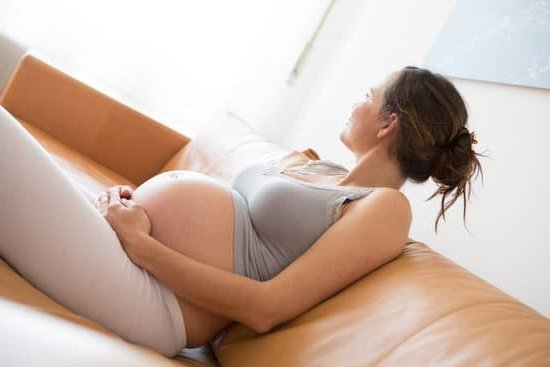Are you experiencing breast pain and wondering if it could be a sign of pregnancy? Understanding the different types of breast pain and their relation to pregnancy can provide insight into this common symptom. This article will delve into the topic of breast pain during pregnancy, exploring the various types, common symptoms, causes, and dispelling myths surrounding the phenomenon.
Breast pain is a common complaint among women, and it can take on different forms depending on its underlying cause. In the context of pregnancy, understanding what kind of breast pain indicates pregnancy is important for expectant mothers seeking to differentiate between normal discomfort and potential signs of pregnancy. It’s essential to be aware of the various changes your body may undergo during this time and how they manifest in your breasts.
Throughout this article, we will explore the different types of breast pain experienced during pregnancy, including their common symptoms and causes. We will also address concerns and myths surrounding breast pain in pregnancy while providing tips for managing this discomfort.
Additionally, we will discuss when it’s necessary to seek medical advice for breast pain during pregnancy. Whether you are currently pregnant or planning for a baby in the future, understanding how breast pain relates to pregnancy is crucial for your overall well-being during this extraordinary time.
Understanding the Different Types of Breast Pain
During pregnancy, many women experience changes in their breasts, including the sensation of pain. Understanding the different types of breast pain can help expectant mothers recognize what is normal and when to seek medical advice.
1. Cyclical Breast Pain:
This type of breast pain is similar to the discomfort that women may experience during their menstrual cycle. It usually involves both breasts and may feel like a dull, heavy, or aching sensation. Cyclical breast pain is typically hormonal and can be linked to the changes in estrogen and progesterone levels during pregnancy.
2. Non-Cyclical Breast Pain:
Unlike cyclical breast pain, non-cyclical breast pain does not follow a pattern associated with the menstrual cycle. It may manifest as a sharp or burning sensation in one specific area of the breast, often originating from the milk ducts. Non-cyclical breast pain can be caused by factors such as injury, inflammation, or benign growths within the breast tissue.
3. Engorgement:
Engorgement is a common type of breast pain that occurs when the breasts become overfilled with milk due to inadequate breastfeeding or pumping. This can lead to swelling, tightness, and discomfort in the breasts. Engorgement typically happens after giving birth but can persist throughout breastfeeding if not properly managed.
Understanding these different types of breast pain can provide valuable insight into what kind of symptoms are typical during pregnancy and when further evaluation may be necessary.What kind of breast pain indicates pregnancy.
Exploring the Common Symptoms of Breast Pain in Pregnancy
During pregnancy, women may experience various symptoms related to breast pain. The most common symptom of breast pain in pregnancy is tenderness and sensitivity in the breasts. This is often one of the earliest signs of pregnancy, and many women notice this discomfort before they even miss a period. The breasts may feel heavier, fuller, and more sensitive to touch. Some women also report a tingling or prickling sensation in their breasts.
In addition to tenderness and sensitivity, another common symptom of breast pain in pregnancy is changes in the appearance of the nipples and areolas. The nipples may become more prominent, and the areolas may darken or enlarge. Some women also notice small bumps on the areolas called Montgomery’s tubercles, which are sebaceous glands that secrete oil to keep the nipples lubricated during breastfeeding.
Another symptom to be aware of is sharp or shooting pains in the breasts. These sudden jolts of pain can occur at any time during pregnancy and may be attributed to hormonal changes and increased blood flow to the breasts. While these symptoms are generally considered normal during pregnancy, it’s important for women to be aware of what kind of breast pain indicates pregnancy so they can differentiate between normal discomfort and potential issues that require medical attention.
It’s important for expectant mothers to understand these common symptoms of breast pain in pregnancy so that they can recognize when something might be amiss. Keeping track of any changes or unusual discomforts in the breasts and seeking medical advice when necessary can help alleviate concerns and ensure a healthy pregnancy journey. Understanding what kind of breast pain indicates pregnancy is crucial for women as they navigate the physical changes that come with maternity.
Identifying the Difference Between Regular Breast Pain and Pregnancy-Related Breast Pain
When experiencing breast pain, it can be challenging to distinguish between regular breast pain and pain that may indicate pregnancy. Understanding the differences between the two can help individuals determine whether they should seek medical advice or consider a possible pregnancy.
Characteristics of Regular Breast Pain
Regular breast pain, also known as cyclical mastalgia, is common among women of reproductive age and is often linked to the menstrual cycle. This type of breast pain typically occurs in both breasts and is characterized by a dull, heavy, or aching sensation. It may also be accompanied by swelling, tenderness, or discomfort in the armpit area.
Pregnancy-Related Breast Pain Symptoms
On the other hand, breast pain related to pregnancy tends to differ in its characteristics from regular breast pain. Women who are pregnant may experience sharp or shooting pains in their breasts, along with an increase in sensitivity or tingling sensations. Additionally, pregnancy-related breast pain is often unilateral and concentrated in one specific area of the breast.
Distinguishing Between the Two
One way to distinguish between regular breast pain and pregnancy-related breast pain is by observing any unusual changes in the breasts. If there are sudden changes in size, shape, color, or texture alongside the presence of any of these symptoms, it could indicate that the individual may be pregnant. It’s important to take note of any abnormal symptoms and consider taking a pregnancy test if needed.
Understanding these differences can provide insight into what kind of symptoms indicate a potential pregnancy when experiencing breast pain. If there are any concerns about these symptoms, it is best to consult with a healthcare professional for further evaluation and guidance on next steps.
Discussing the Changes in Breast Sensitivity During Pregnancy
During pregnancy, many women experience changes in their breast sensitivity. This can manifest as increased tenderness, soreness, or pain in the breasts. Understanding these changes can help expecting mothers navigate through this phase more comfortably.
One of the most common types of breast pain during pregnancy is known as cyclical mastalgia. This type of breast pain is often described as a dull, heavy, or aching discomfort that tends to fluctuate with hormonal changes. It is important for pregnant women to differentiate between normal cyclical mastalgia and any unusual symptoms that may indicate a potential issue.
As the body prepares for breastfeeding, the breasts undergo significant changes, including an increase in size and sensitivity. The hormone changes during pregnancy cause an increase in blood flow to the breasts and an enlargement of milk ducts. These changes can result in heightened sensitivity and discomfort for some women.
While some level of breast tenderness and sensitivity is normal during pregnancy, it is crucial for expecting mothers to be aware of what kind of breast pain indicates pregnancy-related issues. Any sharp or severe pain, redness, swelling, warmth to the touch, or abnormal discharge from the nipples should be promptly reported to a healthcare provider.
| Type of Breast Pain | Indication |
|---|---|
| Cyclical Mastalgia | Dull, heavy or aching discomfort that fluctuates with hormonal changes |
| Heightened Sensitivity | Normal changes due to increased blood flow and enlargement of milk ducts |
| Sharp or severe pain, redness, swelling, warmth to the touch or abnormal nipple discharge | Potential pregnancy-related issues requiring prompt medical attention |
Exploring the Causes of Breast Pain in Pregnancy
During pregnancy, it is common for women to experience breast pain and tenderness. Understanding the causes of breast pain during pregnancy can help expectant mothers manage their symptoms and alleviate any concerns they may have. There are several factors that contribute to breast pain during pregnancy, ranging from hormonal changes to physical changes in the body.
Hormonal Changes
One of the primary causes of breast pain in pregnancy is hormonal changes. During pregnancy, the body experiences an increase in hormone levels, particularly estrogen and progesterone. These hormonal fluctuations can lead to breast tenderness and swelling as the body prepares for breastfeeding.
Increased Blood Flow
Another factor that contributes to breast pain during pregnancy is increased blood flow to the breasts. As the body prepares for lactation, the breasts receive more blood circulation, which can result in feelings of fullness, heaviness, and sensitivity.
Physical Changes
The physical changes that occur in the breasts during pregnancy can also cause discomfort and pain. The ligaments and milk ducts in the breasts undergo changes to prepare for breastfeeding, which can lead to soreness and tenderness.
Understanding these causes of breast pain during pregnancy can help women differentiate between normal discomfort and potential issues that may require medical attention. It is important for expectant mothers to be aware of what kind of breast pain indicates pregnancy so they can seek appropriate care if needed. By staying informed about the causes of breast pain during pregnancy, women can better manage their symptoms and focus on their overall well-being throughout this transformative time.
Addressing the Concerns and Myths Surrounding Breast Pain and Pregnancy
During pregnancy, many women experience breast pain, which can lead to concerns and misconceptions about what is considered normal or abnormal. It is important for expectant mothers to understand the common symptoms of breast pain in pregnancy and differentiate between regular breast pain and pregnancy-related breast pain.
One of the main concerns surrounding breast pain during pregnancy is whether it is a sign of a potential problem. It is essential for pregnant women to be aware of what kind of breast pain indicates pregnancy, as well as when it may be necessary to seek medical advice. Understanding these factors can help alleviate unnecessary worry and stress.
There are also myths surrounding breast pain in pregnancy, such as the belief that severe or prolonged breast pain always indicates a problem. By addressing these myths and providing accurate information, expectant mothers can feel more at ease and confident in managing their symptoms.
According to experts, understanding the changes in breast sensitivity during pregnancy is crucial for expectant mothers. These changes are often a normal part of the body preparing for breastfeeding, but it’s important to know what to expect and when to seek medical advice if necessary.
Seeking Medical Advice for Breast Pain During Pregnancy
During pregnancy, it is common for women to experience breast pain and discomfort. While some level of tenderness and sensitivity may be expected due to hormonal changes, there are certain types of breast pain that may indicate a need for medical attention. It is important for expectant mothers to be aware of the different types of breast pain and when it is necessary to seek advice from a healthcare professional.
Here are some key points to consider regarding when it may be necessary to consult a doctor for breast pain during pregnancy:
- Persistent or Severe Pain: If you are experiencing persistent or severe breast pain that does not seem to improve with home remedies or over-the-counter pain medication, it is advisable to consult a doctor. This could indicate an underlying issue that requires medical attention.
- Unexplained Lumps or Changes in Breast Texture: Any unexplained lumps or changes in the texture of the breasts should be promptly evaluated by a healthcare provider. These could potentially be signs of a more serious condition such as mastitis or a blocked milk duct.
- Unusual Discharge from the Nipples: If you notice an unusual discharge from your nipples during pregnancy, particularly if it is bloody or clear in color, it is important to seek medical advice. This could indicate an issue with your mammary glands that needs to be addressed by a healthcare professional.
It is essential for pregnant individuals experiencing concerning breast pain to prioritize their health and seek medical advice if they have any worries or uncertainties about their symptoms. Your healthcare provider can offer guidance and support, as well as determine whether further evaluation or treatment is necessary.
Tips for Managing Breast Pain During Pregnancy
Pregnancy can bring about many changes in a woman’s body, including breast pain. While it is common for women to experience breast pain during pregnancy, it can still be uncomfortable and bothersome. However, there are ways to manage this discomfort and alleviate the symptoms.
One tip for managing breast pain during pregnancy is to wear a supportive and comfortable bra. A well-fitting bra can provide the necessary support to reduce strain on the breasts and minimize discomfort. It is recommended to opt for a maternity or nursing bra that offers adequate support without constricting the breasts.
Another helpful tip is to apply warm compresses to the breasts. The warmth can help relax the muscles and alleviate any tension or soreness in the breasts. Some women also find relief from cold compresses, so it may be worth experimenting with both temperatures to see which works best.
Additionally, practicing good posture can also help manage breast pain during pregnancy. Slouching or improper posture can put extra strain on the back and chest muscles, exacerbating breast pain. By maintaining good posture, women can reduce unnecessary strain on their chest muscles and decrease discomfort.
It is important for pregnant women experiencing significant or prolonged breast pain to consult with their healthcare provider. While some degree of discomfort is expected during pregnancy, severe or persistent breast pain could indicate an underlying issue that requires medical attention. Seeking prompt medical advice will ensure proper evaluation and appropriate management of breast pain during pregnancy.
Conclusion
In conclusion, it is important for women to understand and embrace the changes in breast pain during pregnancy. It is normal for women to experience different types of breast pain such as tenderness, soreness, or tingling sensations, which are often indicators of hormonal changes in the body. By understanding the common symptoms and distinguishing between regular breast pain and pregnancy-related breast pain, women can better manage their discomfort and seek appropriate medical advice when necessary.
Furthermore, it is crucial to recognize that every woman’s experience with breast pain during pregnancy can vary. Changes in breast sensitivity, such as an increase in size or heaviness, are common during this time due to hormonal fluctuations and preparations for lactation. Knowing the causes of breast pain in pregnancy, including growth of milk ducts and increased blood flow to the breasts, can help alleviate concerns and dispel myths surrounding this topic.
Ultimately, seeking medical advice for breast pain during pregnancy should not be overlooked. Women should consult a doctor if they experience severe or persistent breast pain as it may indicate an underlying issue.
With proper guidance from healthcare professionals and by following tips for managing breast pain during pregnancy, women can navigate this aspect of their prenatal journey with confidence and peace of mind. Understanding the changes in breast pain during pregnancy is a natural part of the maternal process that can be embraced with knowledge and support.
Frequently Asked Questions
What Part of the Breast Hurts in Early Pregnancy?
In early pregnancy, it’s common for women to experience breast tenderness. This pain is often felt in the outer part of the breasts, near the armpits. It can be described as aching, tingling, or even a burning sensation.
What Is the Difference Between Period Breast Tenderness and Pregnancy Breast Tenderness?
The main difference between period breast tenderness and pregnancy breast tenderness lies in timing and intensity. Breast tenderness during menstruation typically occurs a few days before your period starts and may lessen once it begins. On the other hand, breast tenderness in early pregnancy tends to be more intense and lasts longer.
How Many Days Before Pregnancy Do Your Breasts Hurt?
Breast pain before pregnancy isn’t necessarily a reliable indicator of conception since many women experience cyclical breast discomfort due to hormonal changes during their menstrual cycle. However, some women do report experiencing breast tenderness within days of conception, likely due to hormonal shifts occurring in the body as it prepares for pregnancy.

Welcome to my fertility blog. This is a space where I will be sharing my experiences as I navigate through the world of fertility treatments, as well as provide information and resources about fertility and pregnancy.





